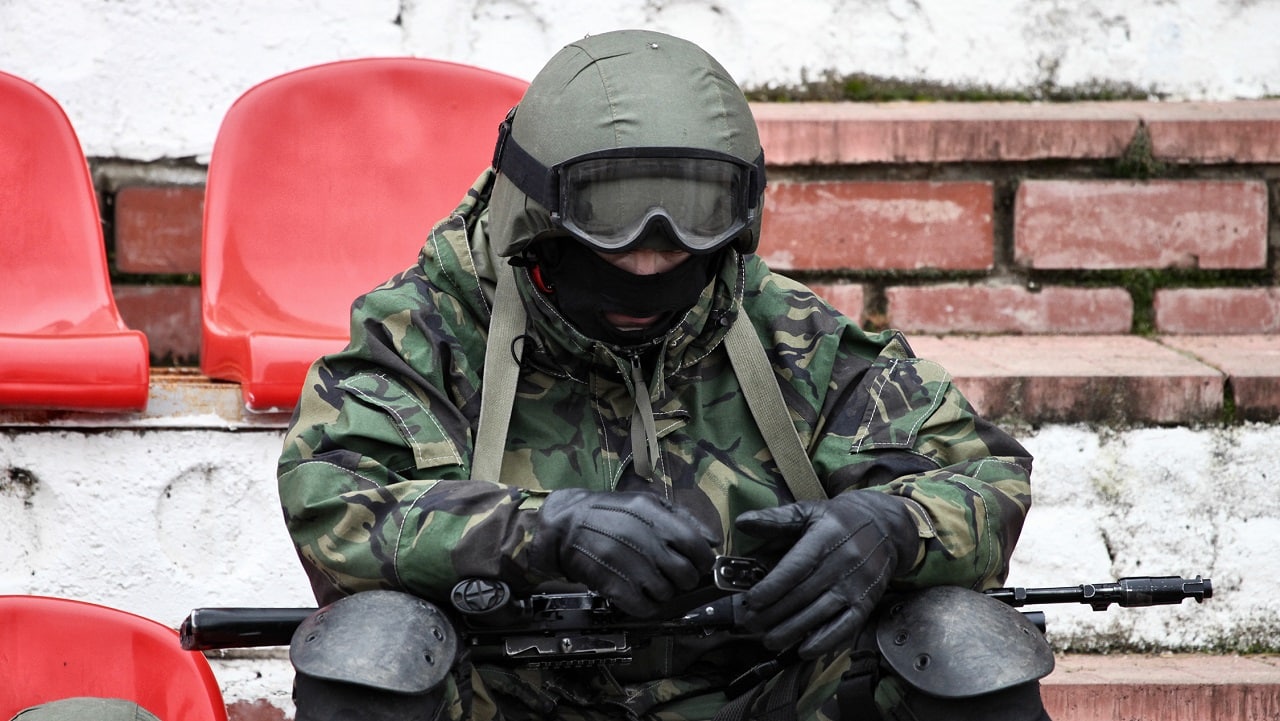On Thursday evening, Russian President Vladimir Putin was seen in a video declaring peace in Ukraine. However, there was no reason to rejoice, as the video wasn’t real.
The only telltale signs were that the voice didn’t sound like Putin’s and lip movements were slightly out of sync with the speech.
It was a “deepfake” – a sophisticated, manipulated video that literally put words in the Russian leader’s mouth.
“The President of the Russian Federation announced the surrender of Russia. Russian soldier, drop your weapons and go home while you’re alive!,” the “fake” Putin proclaimed in a video that was shared on Twitter.
Президент РФ обьявил о капитуляции россии. Русский солдат, бросай оружие и иди домой, пока жив! pic.twitter.com/5wWC3UlpYr
— Serhii Sternenko (@sternenko) March 16, 2022
Another video, also not real yet not as convincing, appeared to show Ukraine’ss President Volodymr Zelenskyy appearing behind a podium, urging his citizens to put down their weapons. The manipulation of the video was easier to spot, Zelenskyy’s head was too large but also more pixilated than his body.
Yet, there is the danger that this technology will make it increasingly difficult to know what is real and what isn’t.
“The Zelensky deep fake is just the beginning of the disinformation wars to come,” explained technology industry analyst Roger Entner of Recon Analytics.
“All sides will try to create confusion, doubt, and havoc through messages that come from someone else,” Entner told 19FortyFive.
Understand Deepfakes
The term deepfake was first coined in 2017 by an anonymous Reddit user who shared a manipulated video of an ex-girlfriend, but in recent years, deepfake videos have increased greatly in sophistication and remain fairly easy to create. A concern has been the potential harm these manipulated videos, which use artificial intelligence (AI) to alter the visuals, can pose to one’s reputation. In 2018, a doctored video was posted online of House Speaker Nancy Pelosi in which she was slurring her words and appeared inebriated.
The technology essentially grew out of the same video editing tools that can convincingly “de-age” an actor in a Hollywood movie, but its accessibility to the general public has allowed it to be used in far more nefarious ways. Social media also allowed for these doctored videos to readily “go viral” and spread to users around the globe.
The technology makes it hard to trust your eyes.
“It doesn’t matter if it is heads of state like in this case or some high-tech criminal impersonating you when you go through voice authenticated customer service at your bank,” added Entner.
Ukraine War: Part of a Wider Disinformation Campaign
Deepfakes are just part of a wider misinformation/disinformation campaign being employed by both Moscow and Kyiv, but also by third parties.
Such clever editing of photos and videos has existed as long as there have been photos and videos. The ability to manipulate photos has existed practically since the medium was created – and one of the earliest examples was of the Union Army’s General Ulysses S. Grant sitting atop a horse. That photo was an early “mash-up” that incorporated Grant’s head, the body of another general on a horse, and a Confederate POW camp in the background. The goal was to make the general seem more heroic.
During the Second World War, British filmmakers edited footage of German dictator Adolf Hitler following the French surrender in June 1940 to make him appear almost foolish. In the unedited footage, Hitler could be seen raising his right knee and then emphasizing the step downwards, like a stomp – but the footage was looped and repeated so he looked like he had danced a “ celebratory jig.”
Technology, including Photoshop, has made it increasingly easier to manipulate photos, while deepfakes can now alter videos in a way that was once only possible in Hollywood.
Public Figures
What is also worrisome is that Zelenskyy and Putin – like most world leaders – appear on video almost daily. That provides plenty of footage to manipulate, and that makes it harder for experts to determine and prove it wasn’t real. Reuters was able to determine that the footage used to create the manipulated Putin video was taken from an earlier address he had given on Feb. 21.
Such due diligence may be increasingly necessary.
“The more data on someone out there is easier it gets to impersonate them,” warned Entner. “Like with everything, technology gets increasingly easier to use.”
Now a Senior Editor for 1945, Peter Suciu is a Michigan-based writer who has contributed to more than four dozen magazines, newspapers and websites. He regularly writes about military hardware, and is the author of several books on military headgear including A Gallery of Military Headdress, which is available on Amazon.com. Peter is also a Contributing Writer for Forbes.

